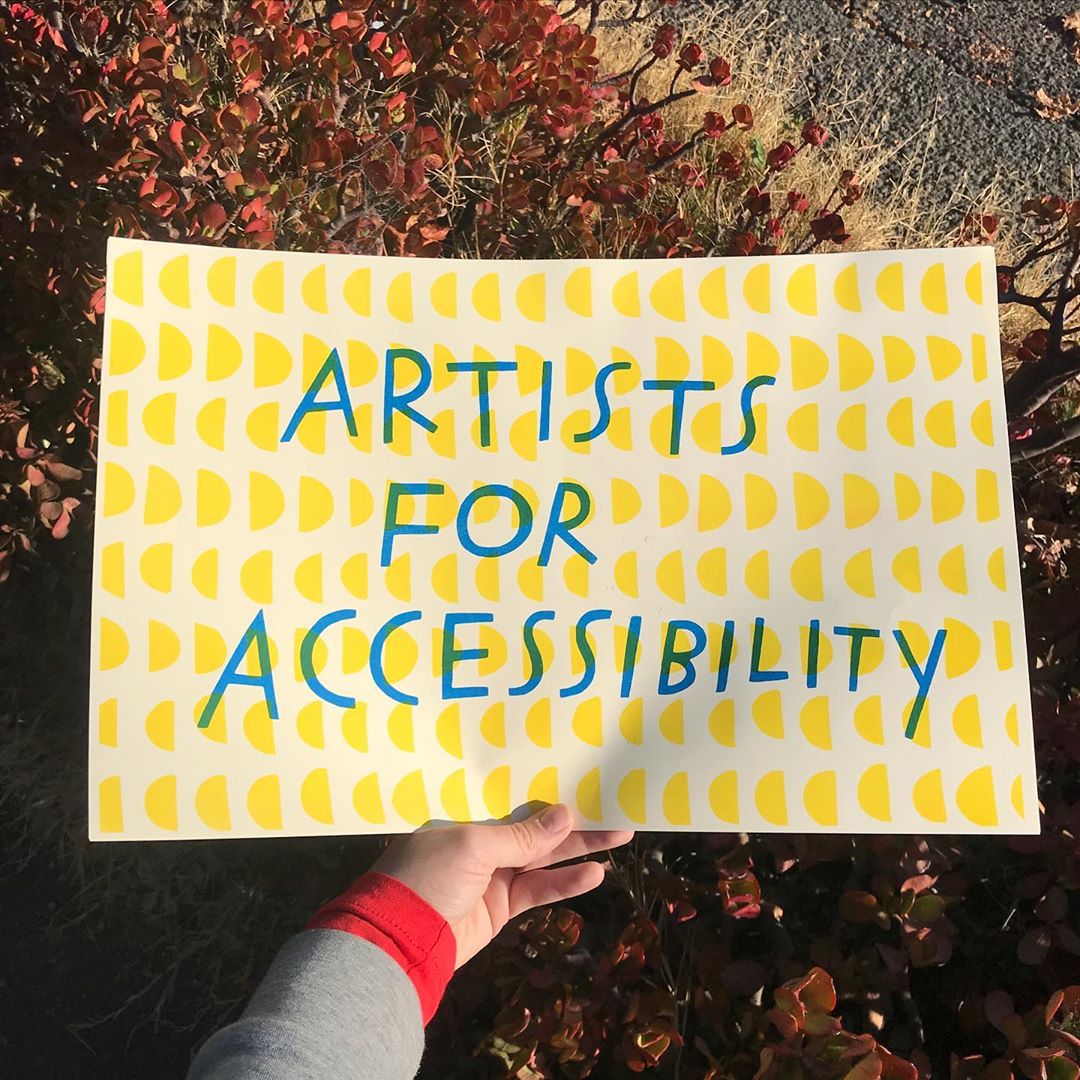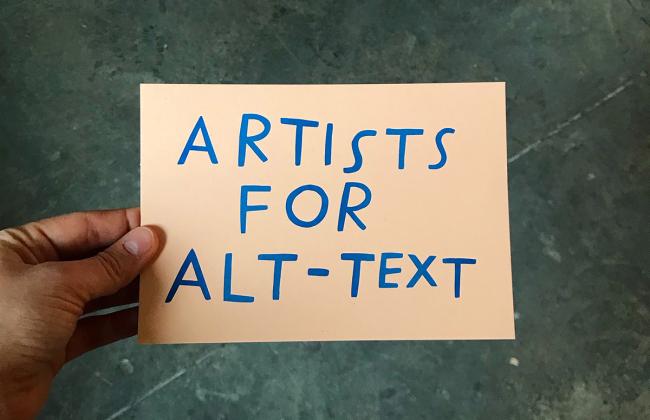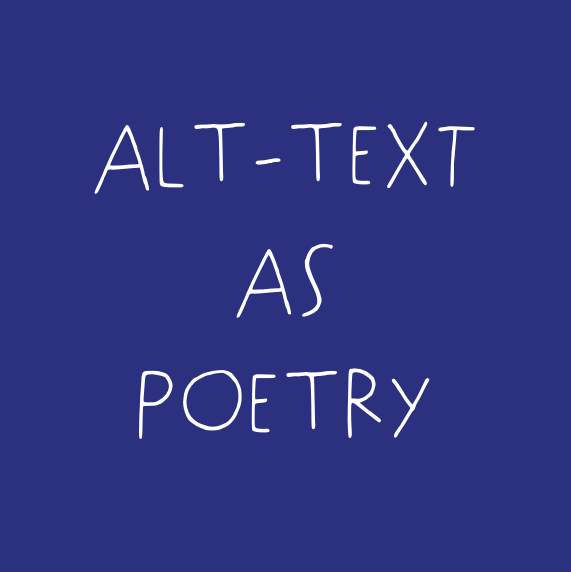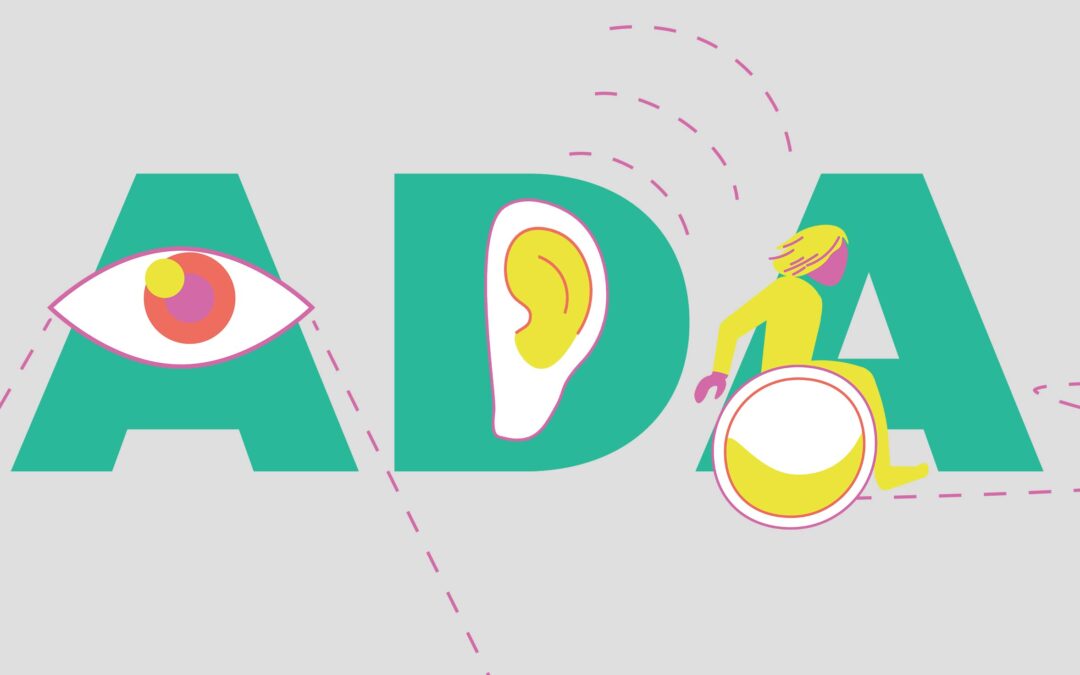
Who says that the world of ADA website compliance has to be a humdrum list of checkboxes adhering to the Web Content Accessibility Guidelines (WCAG)? We were excited to learn about the work that artist Shannon Finnegan is doing to make people aware of the potential for alt-text to be beautiful. She has a goal of pushing alt-text beyond the realm of compliance into a space of exploration, experimentation, and artistry.
Shannon recently led an alt-text as poetry workshop at BAMPFA, the Berkeley Art Museum and Pacific Film Archive, where she had participants describe a variety of images ranging in contrast and complexity. The exercises involved writing two to three sentences describing the image in about five minutes, followed by a group discussion. One exercise asked participants to use an image from their own phone or to describe something in the room.

1. Pay attention to language.
You can shift the process simply by putting a bit of thought and care into crafting your alt-text. Don’t write like a robot; think about the difference between “This is an image of man and woman” and “A couple in matching Christmas sweaters, laughing. The man is holding mistletoe over the woman’s head while she looks directly at the camera.”
Ask yourself what words you’re using and what their connotations are. Does the tone of your writing match the feeling that the image conveys? Image description and alt-text can go beyond simply narrating which objects are visually present and convey additional information that really helps a non-viewer feel the image.
2. Don’t go overboard on words.
People usually fall into one of two camps when it comes to alt-text. Either their text is unhelpfully dreary and sparse (like the “image of man and woman” above) or they are excessively wordy. There is definitely a time and place for including long, dense descriptions, but alt-text should usually be concise. For most images, one or two sentences is perfect. This is where poetry comes in; poems teach us how to pare down language and to still be expressive while being brief. You can always start out with more words than you need and then trim away the excess fat.
3. Use an experimental approach.
Poems are great teachers about how to play with words and to explore ways of conveying intense meaning, all of which help our alt-text to be more powerful. When you translate visual information into text, lots of questions come up as you try to describe the image. What’s important? What can be left on the cutting room floor? Try out different techniques and strategies to see what works best for your style.

Shannon’s work is focused on educating and awakening the sensibilities of non-disabled people, helping them understand that access is not just about compliance or minimum effort. In an interview with Eyebeam, she said, “There are creative and exciting ways to approach access that can be very generative. Alt-text has been written in this very dry and perfunctory way, but we don’t have to do it like that. We can do it in interesting and intentional ways.”
Next steps
First off, the next time you’re facing a blinking cursor near your “alt =” code, don’t just toss it off with the minimum effort allowable. Make your alt-text a delight for a reader to encounter. While it’s true that 99% of your audience might not see it, you’ll have the joy of knowing your code was well-crafted. You’ll also have the pleasure of delighting that 1% who DO read it.
For anyone interested in thinking more about this, Shannon recommends reading “More Than Meets the Eye: What Blindness Brings to Art” by Georgina Kleege. She also points us to the guidelines in use at the Museum of Contemporary Art in Chicago as a helpful reference. These guidelines are also below.
MCA Guidelines for Writing Alt Descriptions
- Alt descriptions: one sentence, preferably without dependent clauses (max 30 words). Example: A black-and-white photograph depicts smoke billowing from a body-sized trench in a clearing with weeds and trees on the horizon.
- Do not start descriptions with “This is an image of”, “A view of”, “You see”, “This is an installation view of”, etc., simply start describing the content.
- Describe the objects/information most important to understanding the image.

